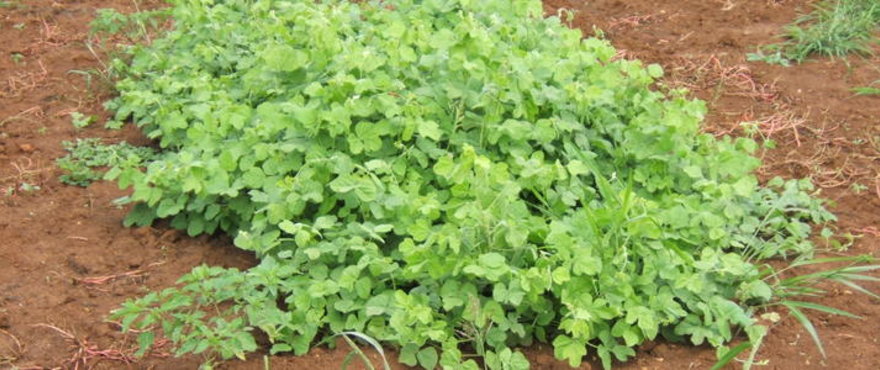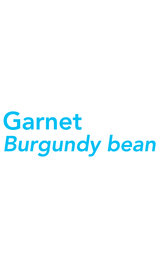Download a copy of the Garnet Burgundy Bean factsheet.
Garnet is a legume from the Macroptilium family. Suitable for grazing in mixes, monoculture or for hay production, it displays good drought, grazing and cold tolerance for sub-tropical environments. Garnet establishes easily and also performs very well in combination with selected grasses. Garnet is suitable for a wide range of soil types from sandy loams to heavy clays. It will grow on into the late autumn, providing more palatable feed, unlike other varieties. Its persistence under grazing is for 2–3 years and will regenerate from hard seed levels. Garnet provides high feed quality and its large seeds assist with rapid establishment.
Key features
- A hardy, non-bloating summer legume
- Growth habit can vary depending on environment
- Suitable for grazing or hay
- A late maturing variety selected for long growing season, high rainfall environments
- Good drought and cold tolerance
- Recruits readily from seed for extended stand life under good management
- Greater autumn growth and cool season stay-green than previous Burgundy bean cultivars
- Suits a wide range of soils and 550mm+ rainfall
Growth habit
Burgundy bean is easy to establish and can quickly provide a canopy suitable for grazing. It is a persistent perennial due to its robust root system, and can continually produce new shoots. Its twining nature allows for growth in mixes with grasses and adds to productive value. It requires specific rhizobium for effective nodulation. Best regrowth can be obtained when the crop is fully established due to its capacity to store food reserves in the root.
Uses
Suitable for both grazing or hay production. It is also suited to weed or erosion control. The Burgundy bean offers an alternative to lucerne, butterfly peas or lablab as a pasture or for fodder/forage production and it performs very well in combination with selected grasses. Burgundy bean is highly palatable, readily eaten by cattle and can be selectively grazed out. Management needs to be employed to maximize the production from Burgundy bean either alone or in mixes with grass, giving greater live-weight gains, comparable to other legumes. Unlike lucerne, it does not cause bloat problems.
Adaptation
Burgundy bean is widely adapted and persistent with its ability to regenerate. Pods shatter allowing good distribution of seed. Seedlings can readily develop from hard seed banks within the soil. Care must be taken in early developing stands to allow a hard seed bank to develop.
Management
Burgundy bean is a short-lived perennial. It will rely on seedling recruitment for ongoing stand persistence beyond 2–3 years, such that older stands will become a mix of older crowns and newer seedlings. Burgundy bean will pod and seed readily, with pods that shatter and disperse seed up to several metres away from the parent plant. Due to its palatability, management intervention may be required to ensure that the Burgundy bean has periodic opportunities to set seed, particularly in younger stands. Garnet’s late maturity will give greater forage production within the growing season.
Suggested sowing rates
Despite the large seed, Burgundy bean should ideally be sown shallow with good soil-seed contact. Establishment of surface sown seed may not be as effective. Seed should be planted when soil temperatures exceed 17˚C. Care should be taken not to plant in the hottest summer weather.
Recommended planting rates for Garnet AgriCOTE Burgundy bean are:
Stand alone: 3–5kg/ha
In mix: 2–5kg/ha
Irrigated: 6–10kg/ha
Plant Breeders Rights (PBR): This variety is registered under Plant Breeders Rights (PBR) in Australia. Unauthorised commercial propagation or any sale, conditioning, export, import or stocking of propagating material is an infringement under the Plant Breeders Rights Act (1994). Any breach of this legislation will leave the grower liable for prosecution.
Disclaimer: The information presented in this brochure is from official and other sources and is considered to be reliable. It is provided in good faith and every care has been taken to ensure its accuracy. Barenbrug does not accept any responsibility for the consequences that may arise from the acceptance of recommendations or the suggestions made.



